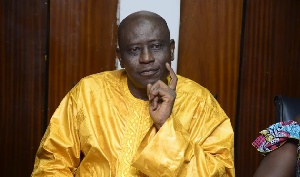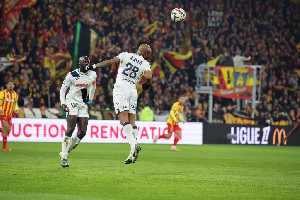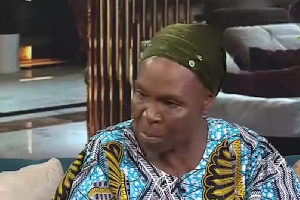CHILD TRAFFICKING: A EUPHEMISM FOR SLAVERY
BY ISAAC KARIKARI (bkkarikari@yahoo.com)
Amongst the many issues finding space on the media landscape, there is one which I consider to be very important. In my opinion it is much more important than the politicking and bickering (which I consider unnecessary) going on. It is however not getting the attention it needs to be given. Probably because the papers and other media networks may not get “enough” patronage like they do when the stories are political in nature. That says something about the media’s preoccupation being the making of sales rather than helping solve problems. I don’t know if the media’s current position can be as a result of the times we are in. Had I been writing this a couple of years or so ago I would have heaped tons of praise on the media but now...
The issue is child trafficking. It is one term that over the last couple of years has gained some prominence. This prominence is, in part, due to its prevalence in Ghana. Another reason for its prominence (the main reason I believe) is the increasing awareness of the general public because of the activities of the organisations, such as Free the Slaves (FTS) an international non-governmental organisation, working to curb it. It is the campaign of awareness creation and sensitisation on issues of child trafficking that have made it prominent, and not its prevalence. We Ghanaians have an attitude of accommodating vices till they become a norm. We only tend to react after something very bizarre has happened. Until we come face-to-face with the horrors of a situation we never seem to appreciate how bad it is. It is in a bid to “help” people appreciate the issue and horrors of child trafficking well that I write this piece.
I know, considering past media reportage and a few current ones that most Ghanaians are aware that there is an evil taking place under the ‘Ghanaian sun’ called child trafficking. In fact according to reports from some prominent organisations in the world, including the UN, Ghana is a hot transit point for traffickers. However, not many are abreast with information on the exact nature, extent and dimensions of child trafficking.
For some people the only reason they consider child trafficking to be bad is that they have seen or heard the word “trafficking” been used for drug trade which they know to be illegal. Some do not have the faintest idea as to what child trafficking entails.
Child trafficking is synonymous with child slavery and I believe the latter should be used more often as a means of helping people get the proper picture. The term trafficking somehow masks the horrors and ugliness of this evil. It tones down the impact that, this despicable act will have on individuals should they fully understand what it is. It makes this form of slavery a bit “dignified”. That is why I consider it a euphemism for slavery. It is just like saying “commercial sex work” instead of prostitution or better still the use of the word or term “invitation” instead of arrest by security agencies.
Child trafficking, according to the Palermo Protocols definition, is “the recruitment, transportation, transfer, harbouring or receipt of persons, by means of threat or use of force or other forms of coercion, of abduction, fraud, deception”
It also includes “Giving, receiving payments or benefits to achieve control over another person, for the purpose of exploitation...” According to the Palermo Protocols, exploitation includes forced labour and servitude.
The Children’s Act, 1998, does not offer a definition for child trafficking like the Palermo Protocols do, but its provisions some of which are outlined below offer a more than fair idea as to what child trafficking entails. All you have to do in order to get the picture is to consider the opposite of what the Act spells out.
Under PART I. THE RIGHTS OF THE CHILD, “a child is a person below the age of eighteen years.”
Even if a child should be considered for employment, according to the provisions of the Act, the minimum age is fifteen years. In the case of light work the minimum age is thirteen years.
The Act offers definitions for both light work and hazardous employment and gives examples of such kinds of work. I believe all this was done to promote clarity and help avoid abuse.
Light work constitutes work which is not likely to be harmful to the health or development of the child and does not affect the child's attendance at school or the capacity of the child to benefit from school work.
Hazardous work is work that poses a danger to the health, safety or morals of a person. The minimum age for such work is eighteen years. Hazardous work includes: going to sea; mining and quarrying and porterage of heavy loads. THE WELFARE PRINCIPLE of Section 2, also states that the best interest of the child should be paramount in any matter concerning the child. It further states that the best interest of the child should be the primary consideration by any court, person, institution or other body in any matter concerned with a child.
Other provisions include THE RIGHT TO GROW UP WITH PARENTS which states emphatically that:
No person shall deny a child the right to live with his parents and family and grow up in a caring and peaceful environment. Unless it is proved in court that in living with his or her parents the child would be exposed to significant harm; subject to serious abuse or life with his or her parents would not be in the best interest of the child.
The definitions and provisions made in the documents mentioned above, namely the Palermo Protocols and the Children’s Act, 1998 (Ghana) succinctly highlight the very nature of child trafficking.
Considering the ages, some being as ‘old’ as four years it is obvious that they are children. Concerning the work they do, there is no way going to sea or disentangling nets under water can be described as light work. Moreover, what aspect of the work they do can be described as safe? Considering the work environment and the conditions, the words-caring and peaceful are nothing but absurdities.
I believe any reasonable person will consider it ironical that children who are living with poor parents and are thus suffering will be “sent” to “assist” fishermen as a means of alleviating their suffering. I say this because the excuse that is sometimes given is the excuse of poverty and hardship. That excuse is very lame. The children end up suffering more. I can categorically state that child trafficking is a brutal violation of the rights of children. It is an affront to their dignity and a blatant disregard for their personhood.
Dealing with the problem of child slavery has proven to be very tough, and rough as well. In an interview with the West Africa Regional Coordinator for FREE THE SLAVES, before he left for Belem in Brazil to deliver a paper on the “Challenges of Eliminating Child Slavery/ Trafficking”, Mr. Emmanuel Otoo pointed out that among the greatest challenges in a sustainable elimination of trafficking are
Weak Leadership Of Government
Poverty & Exclusion(lack of opportunities)
Debilitated Social Movements (with some important exceptions)
Poor Coordination of Anti-Slavery Interventions and
Poor Participation of ALL KEY Stakeholders
He added that it is important to address the issue of poor comprehension of the subject of slavery and trafficking and to have accurate information as well. Mr. Otoo regretted that most people attempt to dilute the definition of slavery and trafficking thus compounding the process of finding a solution. The children (the victims) are nothing but economic assets. Children who are trafficked are sometimes as ‘old’ as four years. It is not surprising to find these children, out of school, traumatised, neglected, mentally unstable, and underfed and lacking even basic healthcare and very miserable. In the case of girls who are trafficked they are sometimes considered “legitimate” avenues for sexual gratification.
How are the children obtained?
It is often through middlemen and sometimes directly from their parents. How different is this from what happened centuries ago when people were ferried to Europe, the Americas and the Caribbean?
Just as some indigenes sold their own kith and kin during those times so are some parents and guardians selling their children and wards now.
The only difference may be the fact that we are now in the 21st century and there is no colonialist cracking a whip; there isn’t much ferrying across seas; and we may not be seeing shackles and chains. But even this difference is no difference at all.
Essentially, it’s the same story but different authors.
Child trafficking is synonymous to (child) slavery.
Opinions of Tuesday, 24 February 2009
Columnist: Karikari, Isaac


















